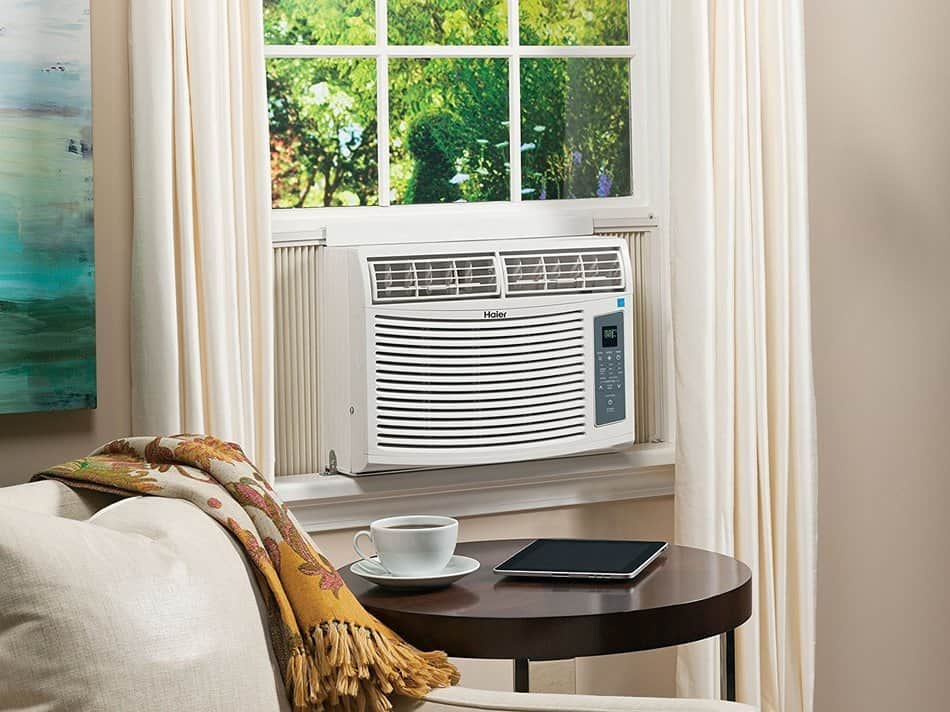Window air conditioners are a popular and effective solution for cooling individual rooms or small spaces. They are relatively easy to install, cost-effective, and can provide immediate relief from hot temperatures. But have you ever wondered how these compact units actually work to cool your room? In this article, we’ll break down the mechanics of window air conditioners in simple terms, helping you understand the science behind staying cool.
Basic Components of a Window Air Conditioner
To understand how window air conditioners work, it’s helpful to know their basic components:
- Compressor: The heart of the air conditioner, which pumps refrigerant through the system.
- Condenser Coil: Located on the outside part of the unit, it releases heat from the refrigerant.
- Evaporator Coil: Located on the inside part of the unit, it absorbs heat from the indoor air.
- Refrigerant: A chemical that flows through the coils, absorbing and releasing heat as it changes state.
- Fan: Moves air over the evaporator and condenser coils to facilitate heat exchange.
- Thermostat: Senses the room temperature and turns the unit on or off to maintain the desired temperature.
- Filter: Traps dust and debris from the air to keep the unit running efficiently and improve air quality.
How Window Air Conditioners Cool the Air
Step 1: Drawing in Warm Air
The process begins when the fan inside the air conditioner pulls warm air from the room into the unit. This air passes through a filter that traps dust and other particles, ensuring that the air being cooled is clean.
Step 2: Absorbing Heat
The warm air is then blown over the evaporator coil. The evaporator coil contains cold refrigerant, which absorbs the heat from the air, cooling it down. As the refrigerant absorbs heat, it evaporates and changes from a liquid to a gas.
Step 3: Removing Humidity
One of the benefits of window air conditioners is their ability to remove humidity from the air. As the warm air passes over the cold evaporator coil, moisture in the air condenses on the coil and is collected in a drip pan. This reduces the humidity level in the room, making it feel cooler and more comfortable.
Step 4: Releasing Cool Air
After the air has been cooled by the evaporator coil, the fan blows it back into the room. This continuous circulation of air helps to lower the overall temperature of the room to the desired level set on the thermostat.
Step 5: Expelling Heat
While the indoor air is being cooled, the refrigerant that absorbed the heat needs to release it somewhere. This is where the condenser coil comes into play. The refrigerant, now in a gaseous state, is pumped by the compressor to the condenser coil located on the outside part of the unit. The fan blows outdoor air over the condenser coil, which helps to release the heat into the outside environment. As the refrigerant releases the heat, it cools down and changes back into a liquid state, ready to cycle through the system again.
Thermostat and Temperature Control
The thermostat plays a crucial role in maintaining the desired room temperature. When the room reaches the temperature set on the thermostat, it sends a signal to the air conditioner to turn off. As the room warms up again, the thermostat senses the change and turns the unit back on. This on-and-off cycling helps to keep the room at a consistent temperature while also conserving energy.
Energy Efficiency and Maintenance
Window air conditioners can be energy-efficient if used correctly. Here are a few tips to maximize efficiency:
- Proper Sizing: Choose a unit that is appropriately sized for the room. An undersized unit will struggle to cool the space, while an oversized unit will cool too quickly without properly dehumidifying the air.
- Sealing Gaps: Ensure that there are no gaps around the unit in the window. This prevents warm air from entering and cool air from escaping.
- Regular Maintenance: Clean or replace the air filter regularly to ensure proper airflow and efficiency. Also, clean the evaporator and condenser coils to maintain optimal performance.
- Programmable Thermostat: Use a programmable thermostat to set the unit to turn off when you’re not home or to adjust the temperature at night.
When to Call for Professional Help
While window air conditioners are generally easy to install and maintain, there are times when professional help is necessary. If your unit is not cooling effectively, making unusual noises, or leaking water, it may need professional repair. Additionally, if you’re unsure about installing the unit yourself, a professional can ensure it’s done correctly and safely.
Contact Airtech for Window AC Repair
If you’re in Las Vegas and need window AC repair, Airtech is here to help. Our team of experienced technicians can quickly diagnose and fix any issues with your window air conditioner, ensuring it operates efficiently and effectively. Whether you’re dealing with a minor problem or need a complete system overhaul, Airtech provides reliable and affordable service to keep you cool during the hottest months. Contact Airtech today for all your window AC repair needs and enjoy a comfortable indoor environment all summer long.
By understanding how window air conditioners work, you can better appreciate their role in keeping your home cool and comfortable. Regular maintenance and proper use will ensure that your unit runs efficiently, providing you with reliable cooling when you need it most. Whether you handle minor issues yourself or call in the professionals, keeping your window air conditioner in good working order is key to beating the heat.

